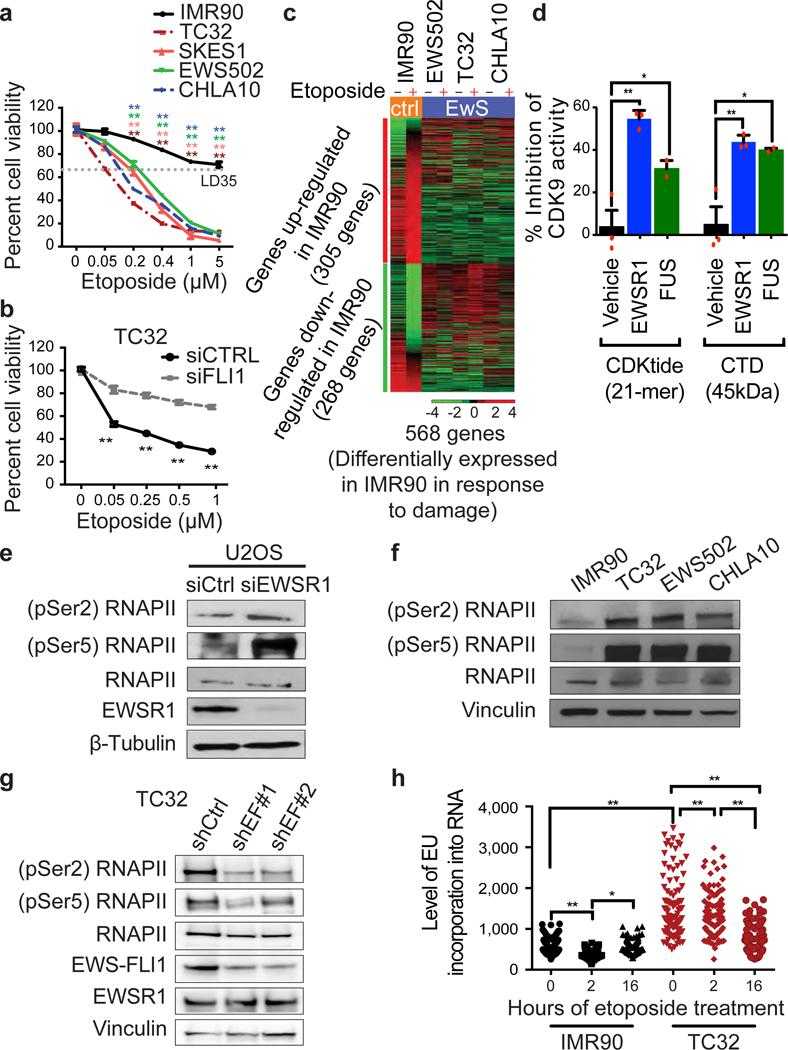Active Recombinant Human POLR2A, CT Domain
| Cat.No. : | POLR2A-1149H |
| Availability | January 09, 2026 |
| Unit | |
| Price | |
| Qty |
- Specification
- Gene Information
- Related Products
- Citation
- Download
| Species : | Human |
| Source : | E.coli |
| Tag : | Non |
| Description : | The carboxy-terminal repeat domain (CTD) of the largest subunit of RNA Pol II contains tandem repeats of a heptapeptide sequence Tyr-Ser-Pro-Thr-Ser-Pro- Ser which is highly conserved among eukaryotic organisms. There are two forms of RNA Pol II in vivo, designated IIO, which is extensively phosphorylated at the CTD, and IIA, which is not phosphorylated. The IIA form preferentially enters the pre-initiation complex (PIC), whereas IIO is found in the elongating complex. The kinase activity of TFIIH can mediate CTD phosphorylation, although other kinases, including Cdc2, Ctk1, the Srb10-Srb11 kinase-cyclin pair, and PTEFb, have also been implicated in CTD phosphorylation. A phosphatase responsible for the dephosphorylation of the CTD has also been identified. CTD phosphatase activity is regulated by TFIIB and TFIIF. The CTD has also been implicated in pre-mRNA processing, most likely functioning as a platform for the recruitment and assembly of factors involved in premRNA processing. Recombinant CTD is isolated from an E. coli strain that carries the coding sequence of human RNA Pol II carboxyterminal domain under the control of a T7 promoter. CTD has been applied in in vitro transcription assays, splicing assays and protein-protein interaction assays. The purified recombinant protein is greater than 95% homogeneous and contains no detectable protease, DNase, and RNase activity. |
| Usage : | For in vitro use only. |
| Form : | Liquid. Supplied in 20 mM Tris-HCl pH 8.0, 100 mM KCl, 0.2 mM EDTA, 1 mM DTT and 20% glycerol. |
| Activity : | 20 ng are sufficient for reconstituted transcription assays and 100 ng are sufficient for a protein-protein interaction assay. |
| Purity : | > 95% by SDS-PAGE. |
| Storage : | Quality guaranteed for 12 months, Store at -80℃. Avoid freeze / thaw cycles. |
| Gene Name | POLR2A polymerase (RNA) II (DNA directed) polypeptide A, 220kDa [ Homo sapiens ] |
| Synonyms | POLR2A; polymerase (RNA) II (DNA directed) polypeptide A, 220kDa; RPB1; RPO2; POLR2; POLRA; RPBh1; RPOL2; RpIILS; hsRPB1; hRPB220; MGC75453; DNA-directed RNA polymerase II subunit A; DNA-directed RNA polymerase II A; RNA-directed RNA polymerase II subunit RPB1; DNA-directed RNA polymerase II largest subunit, RNA polymerase II 220 kd subunit; EC 2.7.7.48; EC 2.7.7.6 |
| Gene ID | 5430 |
| mRNA Refseq | NM_000937 |
| Protein Refseq | NP_000928 |
| MIM | 180660 |
| UniProt ID | P24928 |
| Chromosome Location | 17p13.1 |
| Pathway | Huntington"s disease; Metabolic pathways; Purine metabolism; Purine metabolism; RNA polymerase; DNA Repair; Gene Expression; Influenza Infection; Regulatory RNA pathways; Transcription; mRNA Processing |
| Function | DNA binding; DNA-directed RNA polymerase activity; RNA-directed RNA polymerase activity; magnesium ion binding; nucleotidyltransferase activity; protein binding; transferase activity; ubiquitin protein ligase binding; zinc ion binding |
| ◆ Recombinant Proteins | ||
| POLR2A-30767TH | Recombinant Human POLR2A | +Inquiry |
| POLR2A-1149H | Active Recombinant Human POLR2A, CT Domain | +Inquiry |
| POLR2A-10H | Recombinant Human POLR2A protein, His-tagged | +Inquiry |
| POLR2A-1148H | Active Human POLR2A | +Inquiry |
| POLR2A-6920M | Recombinant Mouse POLR2A Protein, His (Fc)-Avi-tagged | +Inquiry |
| ◆ Cell & Tissue Lysates | ||
| POLR2A-3037HCL | Recombinant Human POLR2A 293 Cell Lysate | +Inquiry |
EWS–FLI1 increases transcription to cause R-loops and block BRCA1 repair in Ewing sarcoma
Journal: Nature PubMed ID: 29513652 Data: 2019/1/3
Authors: Aparna Gorthi, July Carolina Romero, Alexander J. R. Bishop
Article Snippet:The following purified recombinant proteins were purchased: RNAPII CTD fragment (POLR2A-1149H, Creative BioMart), EWSR1 (TP303709, Origene), FUS (TP301808, Origene) and CDK9/cyclin T1 (PV4131, ThermoFisher Scientific).. The in vitro kinase assay was performed using the Adapta kinase assay (PV5099, ThermoFisher Scientific) according to the manufacturer’s instructions.The in vitro kinase assay was performed using the Adapta kinase assay (PV5099, ThermoFisher Scientific) according to the manufacturer’s instructions.

a, Cell viability following etoposide treatment. Etoposide dose causing 35% lethality (LD35, dotted grey line) was used for further experiments. Mean ± s.d., n = 4 technical replicates, one-way ANOVA. b, Etoposide-induced TC32 cytotoxicity after EWS–FLI1 knockdown (siFLI1). n = 4 transfection replicates, two-tailed t-tests. c, Heatmap of damage-induced differential gene expression. d, CDK9 kinase activity inhibition by recombinant EWSR1 and FUS proteins on CDKtide or
Not For Human Consumption!
Inquiry
- Reviews (0)
- Q&As (0)
Ask a Question for All POLR2A Products
Required fields are marked with *
My Review for All POLR2A Products
Required fields are marked with *



